“Keanu” Paved the Way for “Get Out”
Jordan Peele's turn to horror with "Get Out" isn't as unexpected as it may seem. He primed his fans for a disturbing and nuanced exploration of racism with his work on "Keanu" and "Key & Peele."
Incluvie Foundation Gala - Learn More


The Hollywood Blockbuster has come a long way since its inception in the 1970s. It has evolved outside of its initial form of being live-action, special effects-driven action-adventure films that are normally released during the summer. This evolution is perfectly represented in the film Spider-Man: Into the Spider-Verse. The animated film can be compared to earlier Blockbusters such as Jaws, Back to the Future, and past superhero films. The film makes it clear that the animation is taking major influences from comic books, due to the images being dotted with the same type of coloring shown in 1960s comic books, including the opening logos. They are standard for all superhero movies, but they can set the tone for the rest of the film. The images also look like they are constantly glitching out, also giving insight into aspects of the film’s story.
The opening credits follow, presented as text in a comic book. During these introductions, there are occasional shots of the film itself until it finally transitions into the film’s narrative, where it introduces us to the film’s characters. This film is essentially a celebration of animation since it not only has aspects of 2D and 3D animation but also stop-motion. For example, some scenes are shot in 12 frames per second, while more action-heavy scenes are shot in 24 frames per second. The film also uses onomatopoeias along with certain effects, including explosions, punches, and even throwing a bagel at someone. All of which invokes the feeling of a comic book coming to life.
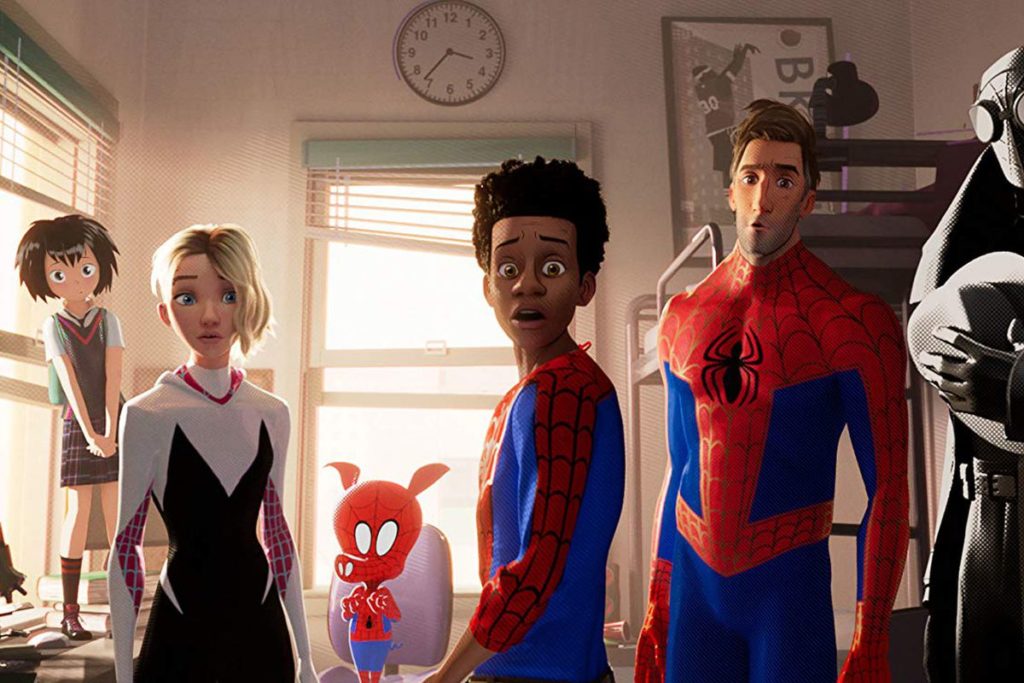
The narrative opens with Peter Parker’s narration, reminiscent of Quentin Tarantino’s Kill Bill film series, which would introduce the bride’s targets. Next we are introduced to Miles Morales, the film’s true main character. Miles doesn’t get the same style of introduction that Peter had received, instead, it shows that Miles likes Hip-Hop and drawing, and is a procrastinator, something most teenagers will relate to. Miles is presented as his own person even within the beloved framework of Peter Parker/Spider-Man, a theme that runs throughout the film.
The audience is then introduced to Mile’s parents. In these opening scenes, it is clear that Miles takes most after his mother as evidenced by their sharing the same lines in back-to-back scenes as a role reversal and the fact that both break into Spanish on occasion. While the role reversal can be seen as comedic and typical of mothers on their children’s first day of school, it also tells how much his mother loves Miles, that she is willing to put aside that they could both be late.
When Miles is interacting with his father, he is much more disinterested and resentful toward his father and he is partially justified. His father is a police officer and is incredibly strict with not only the law but also his family, even going so far as to tell Miles that he does not have a choice when it comes to attending a new school. During this scene, his father drives Miles to school in a police car. This can be interpreted as Miles feeling like a prisoner at his new school since he was forced to leave his old one where he was already acquainted with his classmates. His father to him is merely a police officer who is ordering him around. There are glimpses of paternity in Jeff when he uses his police speaker to tell Miles to say “I love you” back to him, reminiscent of a parent who embarrasses his child in front of other kids. At this point in the story, Miles is alone, not knowing nor talking to anyone, except for a suspicious blonde girl.
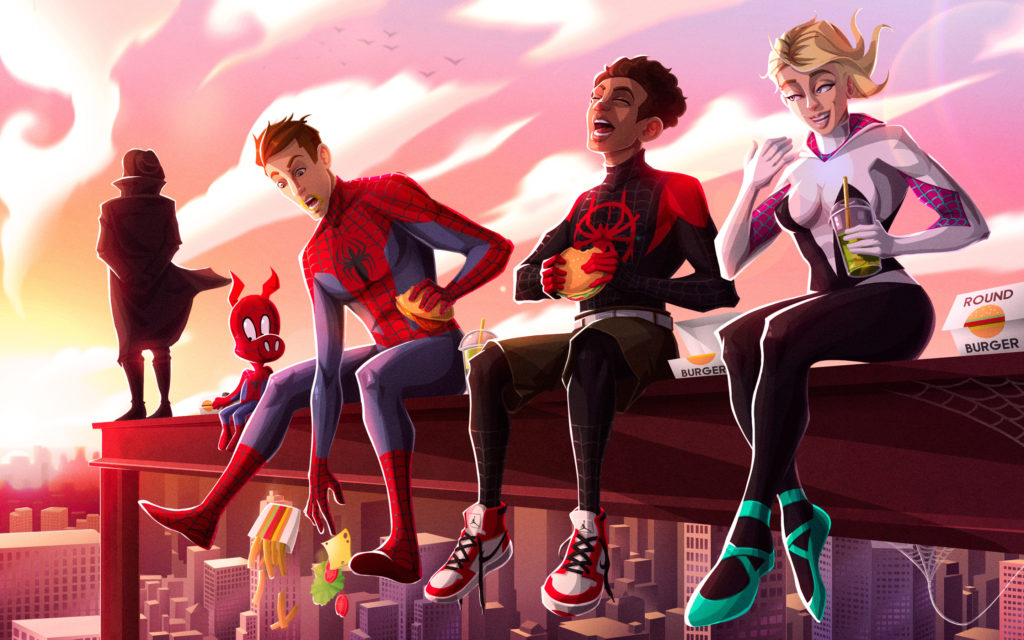
While Miles takes most after his mother, the adult that he looks up to the most is his uncle, Aaron. Aaron is the figure in Mile’s life that encourages him to continue his art and choose what he wants to be. Compared to his brother, he can seem like a bad influence on Miles since he is a bit looser and even encourages Miles to spray paint a wall, something his father would consider vandalism. However, it is Miles’ uncle taking him to the spot to spray paint that Mile’s journey truly begins.
A radioactive spider bites him, staying true to the comics by having his uncle indirectly responsible for Miles becoming the next Spider-Man. The bite is repeated across three comic book panels onscreen, showing the internal effects of the spider’s bite. Miles’ bloodstream looks like a moving comic book drawing with bright reds, pinks, and blues. Whenever this scene occurs in past Spider-Man movies, it would usually results in Peter flinching in pain. To subvert this reaction in the callback, Miles simply swats the spider.
Once Miles discovers he has spider powers, he believes he is at first going through puberty, something most iterations use the spider powers to symbolize. However, authors such as Andrew Kahn chose to interpret it similarly to an LGBT individual coming out. Kahn then goes on to compare the rest of the film to a coming-out story. As unfortunate as it is ironic since the film is different from other animated films, there was a fear that it wouldn’t be accepted among other Hollywood blockbusters. The spider powers are essentially an allegory for change, something that is coming not only to Mile’s life but also to the rest of the city.
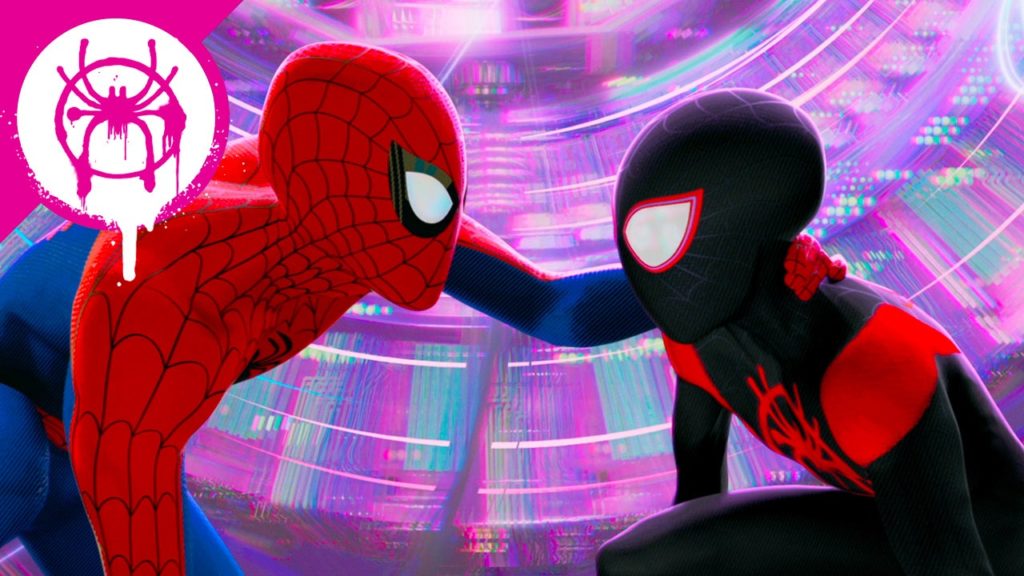
Miles eventually meets his universe’s Spider-Man and gains faith that he has found the only person who understands what he is going through and can be his mentor. Miles’ faith is shattered when the film’s antagonist, Kingpin, kills this version of Spider-Man. Once again, Miles feels alone and without faith. Now that their hero is gone, the rest of New York is also without faith as well. Miles’ journey is a series of highs and lows. These powers initially feel like a curse, but Miles knows that they can be a blessing for others. Miles tries to test the powers himself, but finally loses his faith when he breaks the tool Peter gave him to defeat Kingpin. He is reinvigorated when he gains another, more experienced, if not tired mentor in the form of Peter B. Parker from another universe. Miles’ real goal is to gain faith that he can be a hero and distribute that faith to the citizens of New York and the viewers watching the film. Stopping the Kingpin is a means to this goal, but not his true goal.
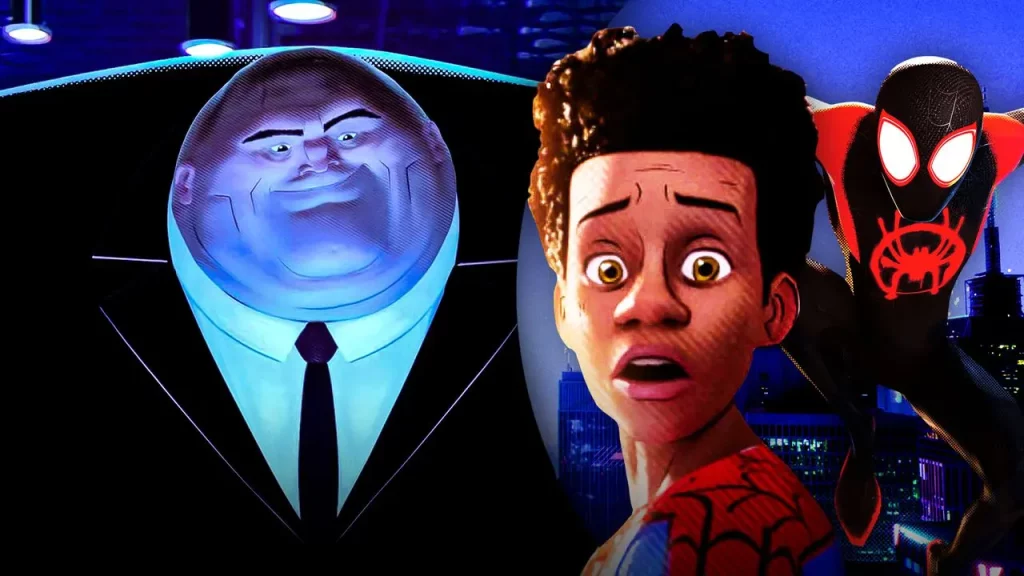
Steven Zeitchik of The Washington Post takes notice of how revolutionary the animation is. His review of the film is filled with interviews with the production crew explaining the importance of the animation. He seems to believe that other studios can experiment with this animation style, bring back 2D and stop motion, and inspire other forms of animation similar to this one or other studios using this style of animation as well. He also appreciated that an original superhero movie based on an already established franchise was made without live-action, yet still managed to be mature enough for older audiences while still appropriate for families.
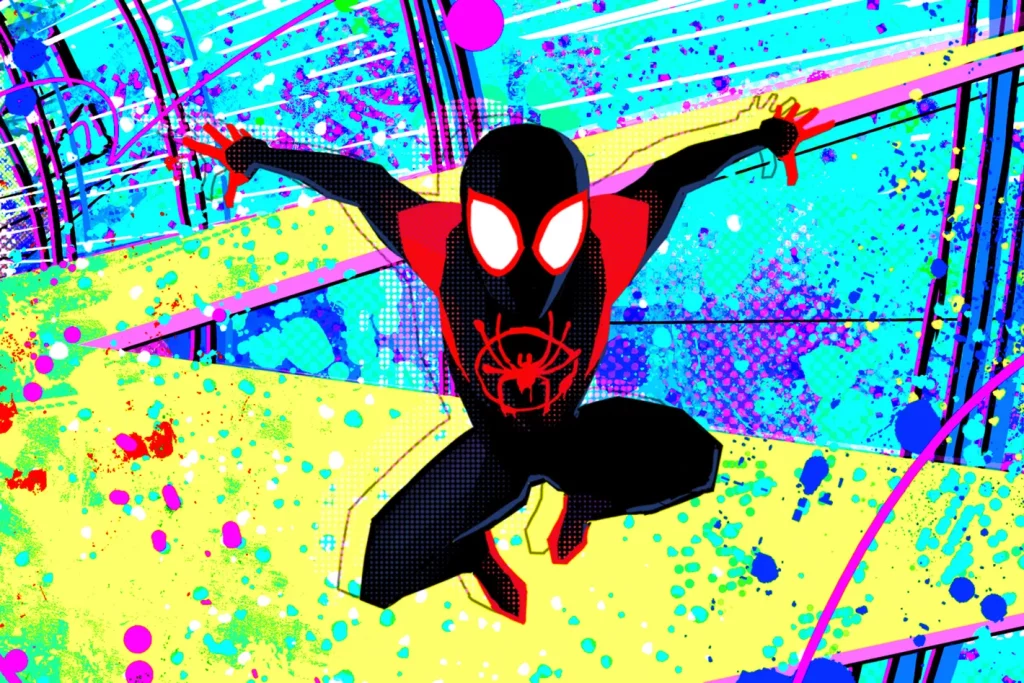
The final battle with Kingpin is the perfect mix of abstraction and concrete hyper-Newtonian phenomenology. There is no concrete way to describe the setting, but there is a contextual reason why it looks abstract. The space-time continuum is being twisted. Gravity is less effective in this area, but still effective enough to feel the impact of each punch the characters throw, until Miles finally destroys the collider, fulfilling his promise to his universe’s Peter Parker, and returning said universe back to a concrete nature. The film always has faith that no one is alone and that anyone can be a hero, no matter who they are and where they come from.
Be on the lookout for the sequel this June 2023, Spider-Man: Across the Spider-Verse.
Related lists created by the same author
Jordan Peele's turn to horror with "Get Out" isn't as unexpected as it may seem. He primed his fans for a disturbing and nuanced exploration of racism with his work on "Keanu" and "Key & Peele."
Related diversity category
Animation as a medium of storytelling can be thought to be open to all ages and as I hope my reading will reveal, 'Nimona' could be interpreted as a transgender story.
Related movie/TV/List/Topic
(Disclaimer: Harmful Language) In celebration of Pride Month, Father's Day, and father figures (and whoever supports you), I revisit Moonlight's brief but spectacular character, Juan. With overarching themes tied to masculinity, I reexamine his intimacy with Little.